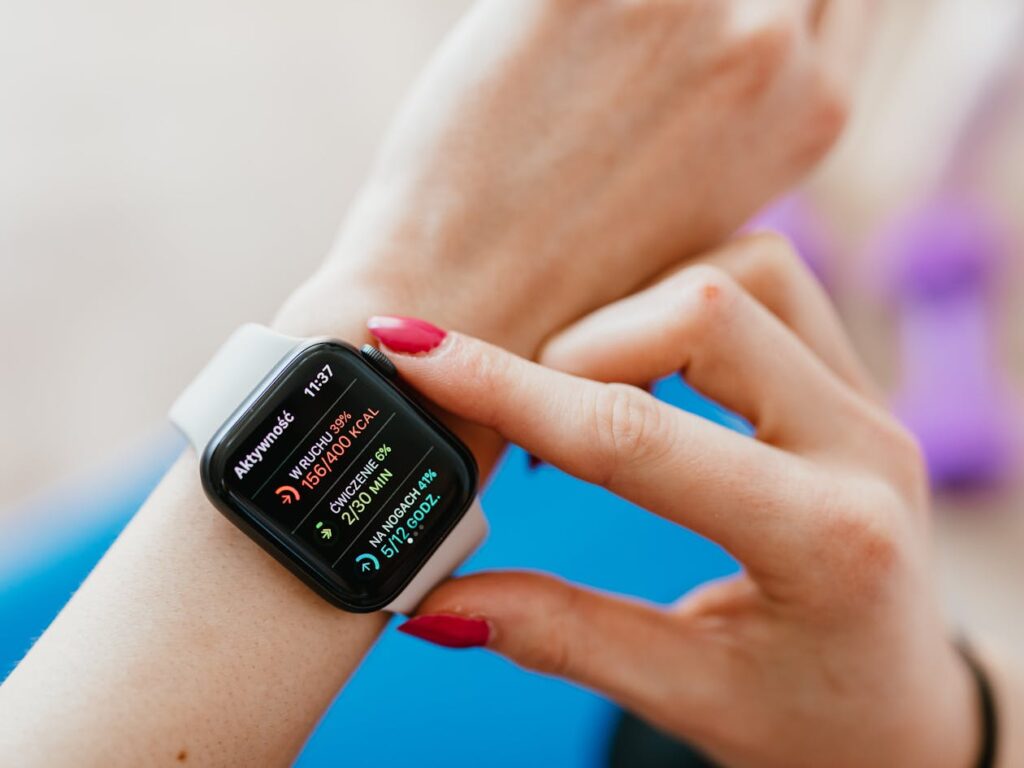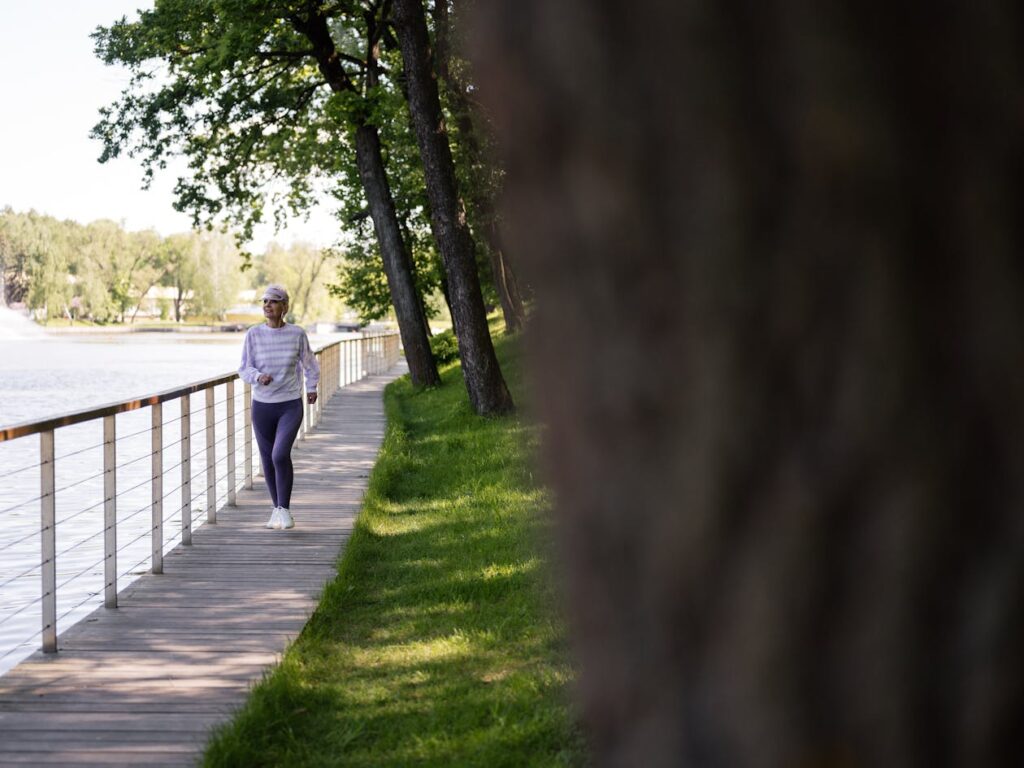4,000 Daily Steps Cut Death Risk by 40% — Study Challenges 10,000-Step Myth

Millions of fitness trackers worldwide flash daily reminders about reaching specific step goals. Most people ignore these notifications, convinced they’ll never hit targets that seem impossibly high. Health-conscious individuals feel guilty when life prevents them from achieving numbers experts claim are necessary. Busy professionals abandon tracking altogether after repeated failures to meet recommended thresholds.
Researchers just discovered something that changes everything about how we think about daily movement. A decade-long study tracking over 13,000 women revealed patterns that contradict popular fitness wisdom. Numbers dramatically lower than conventional recommendations produced shocking health benefits. People struggling to find time for exercise might already be doing enough without realizing it.
What if achieving meaningful health improvements requires far less effort than fitness gurus suggest? New evidence published in a leading medical journal challenges assumptions about daily activity requirements. Research findings offer hope to everyone who feels overwhelmed by unrealistic exercise expectations.
Forget Everything You Know About 10,000 Steps
Popular 10,000-step daily goal dominates fitness culture and device programming worldwide. Smartwatches vibrate congratulations when wearers reach this magic number. Apps celebrate with badges and virtual trophies. Health influencers build entire content strategies around achieving this threshold.
New Harvard research challenges this conventional wisdom with data that surprises even seasoned researchers. Lower step counts produce dramatic health benefits that rival outcomes from much higher activity levels. 4,000 daily steps shows measurable mortality reduction that makes fitness achievable for millions who previously felt defeated.
Brigham and Women’s Hospital research team analyzed walking patterns and health outcomes across populations struggling with mobility challenges. Results suggest fitness industry might have been setting bars unnecessarily high for decades. Evidence points toward more accessible targets that deliver comparable protection against premature death.
Study Tracked 13,000 Women for Over a Decade

Research team recruited 13,547 women over age 62 from Women’s Health Study participant pool. Average participant age reached 72 years old at study start. None had cardiovascular disease or cancer diagnoses when monitoring began between 2011 and 2015.
Activity trackers recorded movements for seven consecutive days, capturing complete weekly patterns. Researchers then followed participants for nearly 11 years through 2024, monitoring mortality and cardiovascular disease development. Published findings appeared Tuesday in British Journal of Sports Medicine.
Comprehensive data collection allowed researchers to examine relationships between step counts, frequency patterns, and health outcomes. Long follow-up period provided sufficient time for mortality differences to emerge. Large participant numbers ensured statistical power for detecting meaningful associations.
During monitoring period, 1,765 women died from all causes, representing 13% of participants. Another 781 women developed cardiovascular disease, accounting for 5% of study population. Statistical analysis compared these outcomes against walking patterns recorded at study start.
Walking Once Weekly Still Cuts Death Risk by Quarter
Women reaching 4,000 steps just once or twice weekly showed 26% mortality reduction compared to those never hitting this threshold. Cardiovascular disease risk dropped 27% at same minimal frequency. Even sporadic walking produced measurable health benefits.
Results surprised researchers expecting daily consistency would prove necessary for meaningful outcomes. Frequency mattered less than previously believed based on earlier research. Single day meeting step threshold provided substantial protection against premature death.
Minimal consistency requirements open fitness possibilities for people with unpredictable schedules or mobility limitations. Weekend warriors achieve similar benefits to daily walkers when total steps accumulate to comparable levels. Bunching activity into fewer days works equally well as spreading evenly across week.
Three Days Weekly Boosts Protection to 40 Percent

Participants reaching 4,000 steps three or more days weekly showed 40% lower death risk from all causes. Heart disease risk remained reduced at 27%, matching benefits seen in once-weekly walkers. Additional walking days boosted mortality protection without proportionally increasing cardiovascular benefits.
Diminishing returns appeared at higher frequencies for cardiovascular outcomes. Going from zero days to one or two days produced largest relative improvements. Adding more weekly walking days yielded additional mortality benefits but plateaued for heart disease risk.
Consistency improves outcomes without requiring daily achievement. Missing several days weekly doesn’t eliminate health benefits completely. Flexible patterns accommodate real life constraints without sacrificing meaningful protection.
Higher Step Counts Deliver Additional Benefits
Women averaging 7,000 daily steps achieved 32% mortality reduction compared to baseline. Cardiovascular disease risk dropped 16% at these higher activity levels. More steps created better overall outcomes following curvilinear relationship.
Dose-response patterns showed continued improvement with increasing step counts up to certain thresholds. Beyond 7,000 steps, additional mortality benefits appeared modest. Health returns plateaued rather than climbing linearly with unlimited walking.
Average participant walked 5,615 steps daily during monitoring week. Baseline activity already exceeded minimum 4,000-step threshold for most women. Higher averages correlated with progressively better health outcomes even among already-active individuals.
Volume Matters More Than Daily Consistency

Total weekly steps drive health benefits regardless of distribution patterns across days. Daily achievement frequency proves less critical than total accumulated movement. “A greater number of steps, regardless of daily patterns, is associated with better health outcomes,” researchers concluded after analyzing data.
Statistical adjustments accounting for average daily steps weakened associations between frequency and outcomes. Volume emerged as key driver of protective effects against mortality and cardiovascular disease. How people accumulate steps matters less than ensuring adequate total movement.
“Bunching” steps into fewer days produces equivalent results to spreading evenly. Weekend hikers gain similar protection as daily mall walkers when weekly totals match. Flexibility allows personalized activity patterns fitting individual schedules and preferences.
Researchers explained: “there is no ‘better’ or ‘best’ pattern to take steps; individuals can undertake [physical activity] in any preferred pattern (eg, ‘slow and steady’ vs ‘bunched patterns’) for lower mortality and CVD risk, at least among older women.”
Why Older Adults Get Most From This Research
Study focused specifically on women over 62, addressing knowledge gaps about aging populations. Older adults often struggle maintaining activity levels from younger years due to mobility challenges, chronic conditions, and life circumstances. Previous guidance intimidated seniors with targets seeming unattainable.
Lower thresholds make fitness goals achievable for elderly populations facing physical limitations. 4,000 steps sounds far more realistic than 10,000 for someone managing arthritis or recovering from surgery. Accessible targets encourage continued effort rather than resignation.
Aging bodies benefit enormously from regular movement even at modest levels. Walking protects against falls, maintains bone density, preserves cognitive function, and supports cardiovascular health. Every additional step delivers value for older individuals.
Research provides evidence-based reassurance for seniors worried about falling short of recommendations. Guilt about “not doing enough” can discourage continued effort. Data showing substantial benefits at lower thresholds supports persistence rather than abandonment.
Weekend Warriors Can Breathe Easy Now

Cramming weekly step goals into Saturday and Sunday produces measurable health benefits. No requirement exists for distributing activity evenly across all seven days. Busy professionals unable to walk during workweeks still gain protection through weekend efforts.
Flexible approach accommodates varying life circumstances and schedules. Parents managing childcare, workers facing long commutes, caregivers attending family members can pursue concentrated walking when time permits. Bunched patterns deliver comparable outcomes to daily routines.
Previous guidance suggesting daily exercise proved necessary discouraged people with irregular schedules. New evidence supports multiple valid approaches to accumulating healthy activity levels. Choice empowers individuals to find patterns matching their circumstances.
How Real People Can Hit 4,000 Steps Daily
Practical strategies make step targets achievable without dedicated exercise sessions. Dr. Tara Narula, ABC News chief medical correspondent, offers concrete suggestions: “It’s really about building it into your daily lifestyle and you have to be mindful of it. For example, getting off the bus a stop early and walking, parking your car a little further away, maybe just walking instead of using transportation like buses or cars, taking the stairs.”
Walking during lunch breaks accumulates steps in 10-minute increments. Phone meetings conducted while circling blocks add movement to workdays. Stairs replace elevators whenever possible. Small decisions throughout days create meaningful totals.
Environmental modifications support increased walking. Parking farther from destinations adds steps before and after activities. Choosing walking routes to errands instead of driving short distances builds movement into routine tasks. Adjusting commute patterns creates opportunities for additional activity.
Making Walking Social and Sustainable

Community walking groups provide accountability and companionship supporting consistency. Social connections make activity enjoyable rather than burdensome. Scheduled group walks create commitment mechanisms reducing skipped days.
Music playlists motivate movement through carefully curated soundtracks. Podcasts and audiobooks transform walking into entertainment time. Pairing physical activity with preferred media makes exercise feel less like obligation.
Dogs require daily walks creating built-in motivation for regular movement. Pet ownership correlates with higher activity levels across age groups. Four-legged companions provide both social connection and exercise incentive.
Step-tracking devices offer accountability through visible progress monitoring. Watching numbers climb provides immediate feedback reinforcing continued effort. Technology transforms abstract health goals into concrete measurable targets.
Study Limitations Worth Considering
Research tracked only women, leaving questions about whether findings apply equally to men. Biological differences might influence how walking benefits translate across sexes. Younger adults might show different patterns than study’s elderly participants.
Activity measurement occurred during single week only, potentially missing seasonal variations or unusual circumstances affecting typical behavior. Longer monitoring periods would capture more representative activity patterns. Brief snapshot might not reflect sustained habits.
Diet information wasn’t collected, preventing analysis of how nutrition interacts with exercise for health outcomes. Prior health conditions like cancer or heart disease served as exclusion criteria but other factors went unmeasured. Multiple variables influence mortality beyond walking alone.
Observational design prevents definitive cause-effect claims. Walking might correlate with other healthy behaviors driving observed benefits. Controlled trials would strengthen causal arguments though practical challenges limit long-term randomized studies.
Why Step Metrics Deserve Official Guidelines
Current physical activity recommendations omit specific step count targets despite widespread tracking technology. Generic “moderate exercise” guidance lacks concrete numbers helping people understand adequate activity. Vague recommendations leave individuals uncertain whether efforts suffice.
2028 US Physical Activity Guidelines revision offers opportunity to incorporate step metrics based on growing evidence. Concrete numbers help people set appropriate targets and track progress. Accessible measurements democratize fitness monitoring beyond those affording gym memberships or personal trainers.
Tracking technology makes step counts universally available through smartphones and inexpensive wearables. Nearly everyone carries devices capable of measuring daily movement. Leveraging existing technology infrastructure supports population health improvements.
Simple Math Shows Achievability of Target
4,000 steps equals roughly 2 miles of walking distance for average stride lengths. Moderate pace requires approximately 30-40 minutes to complete. Duration splits easily into smaller increments throughout days.
Breaking goal into manageable chunks makes achievement realistic. Ten minutes during lunch, ten minutes after dinner, twenty minutes during weekend errands accumulates to meaningful totals. Incremental approach feels less daunting than dedicated exercise blocks.
Regular daily activities contribute toward targets without conscious effort. Shopping trips, household chores, workplace movement all register on trackers. Becoming aware of existing activity often reveals people already doing more than expected.
Loading...

